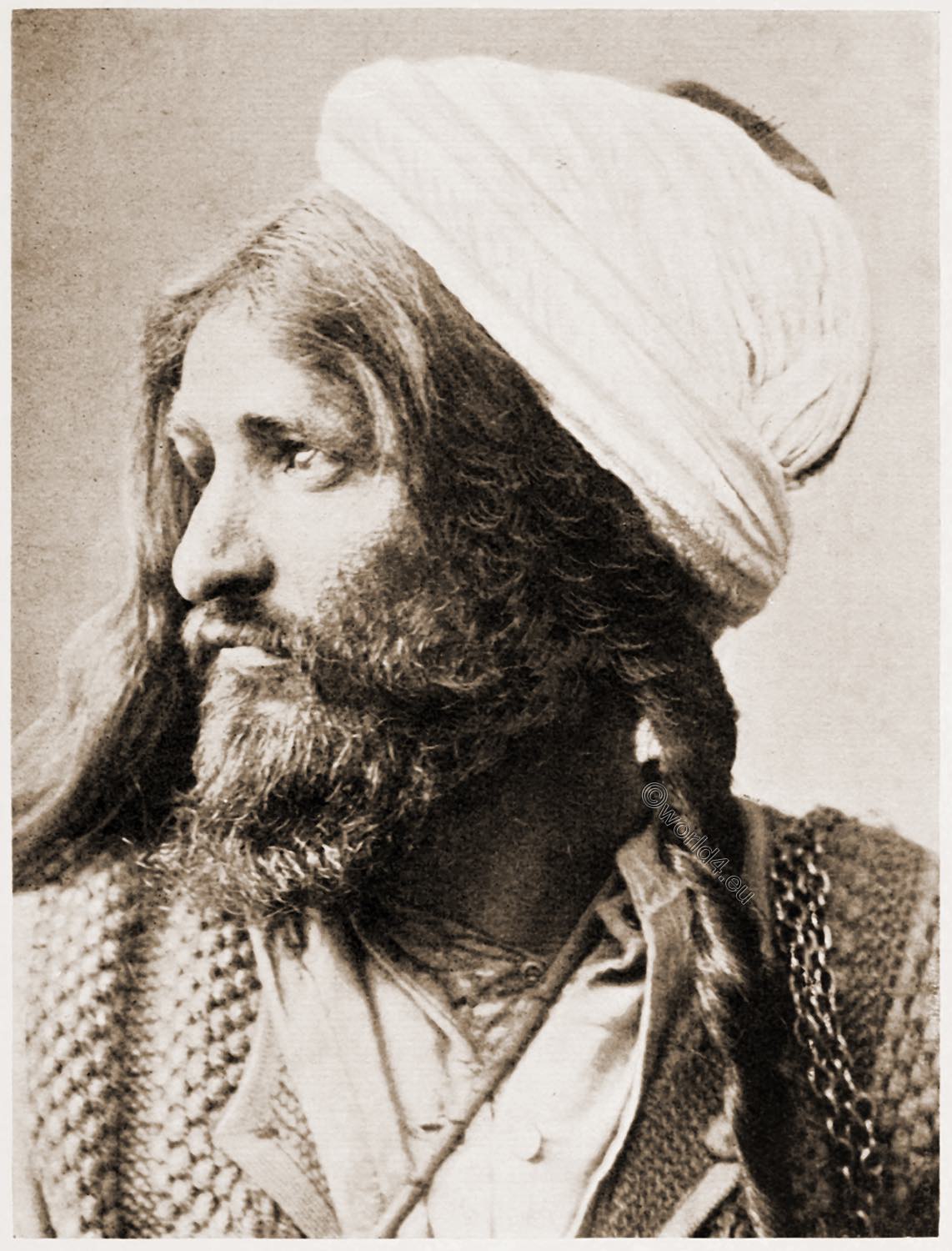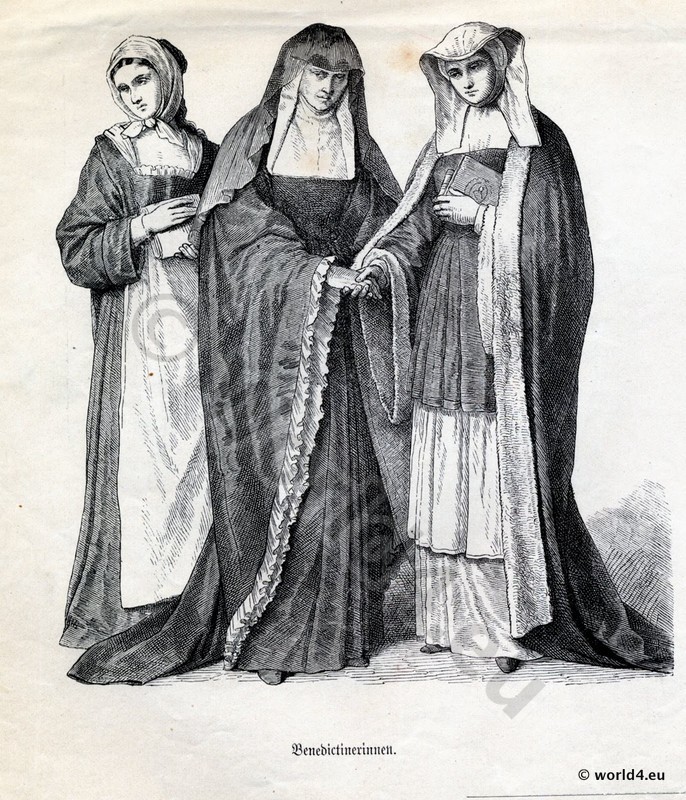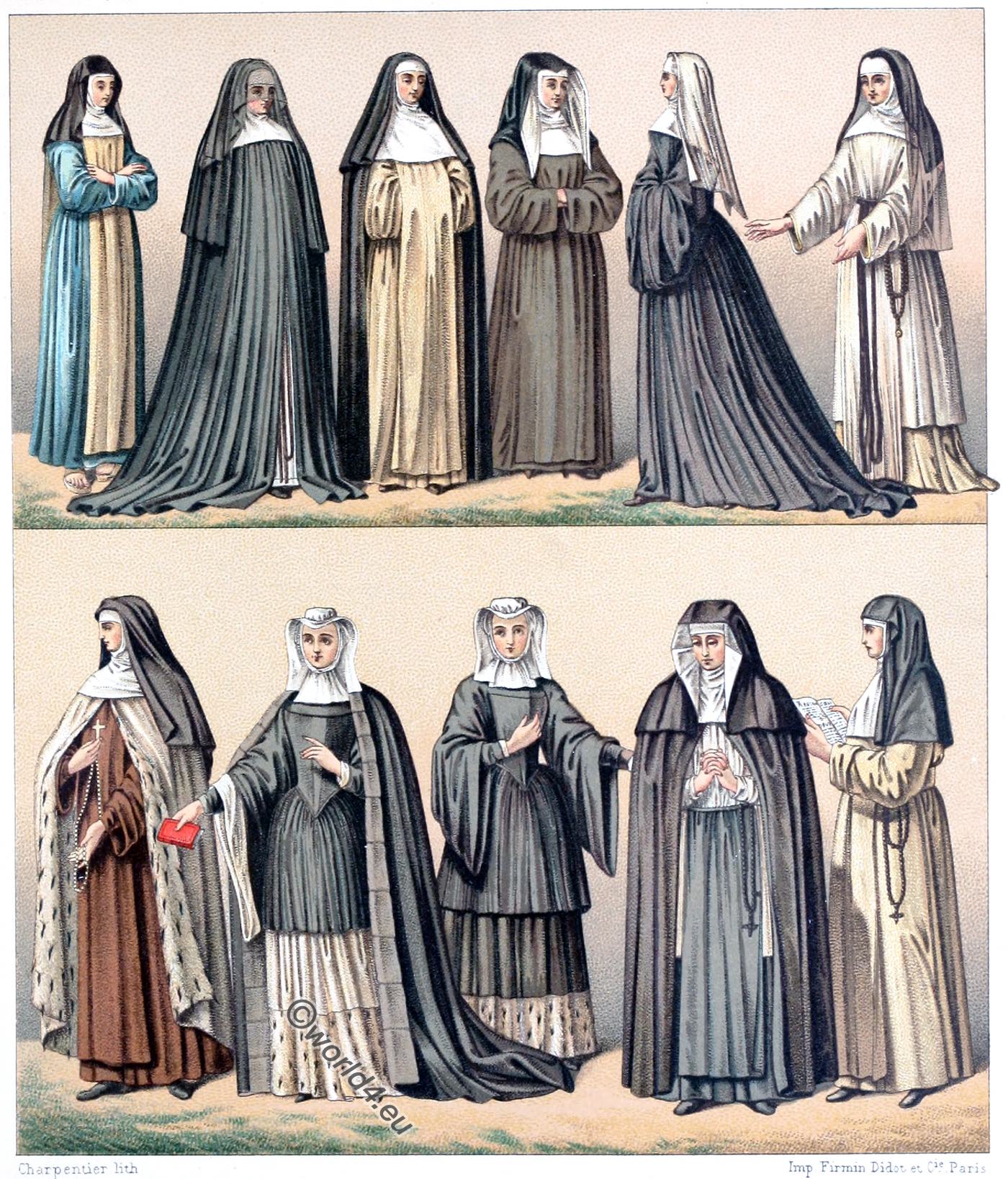Nuns religious habit at the end of the eighteenth century.
Augustinian nuns
Nuns who live according to the Rule of St. Augustine.
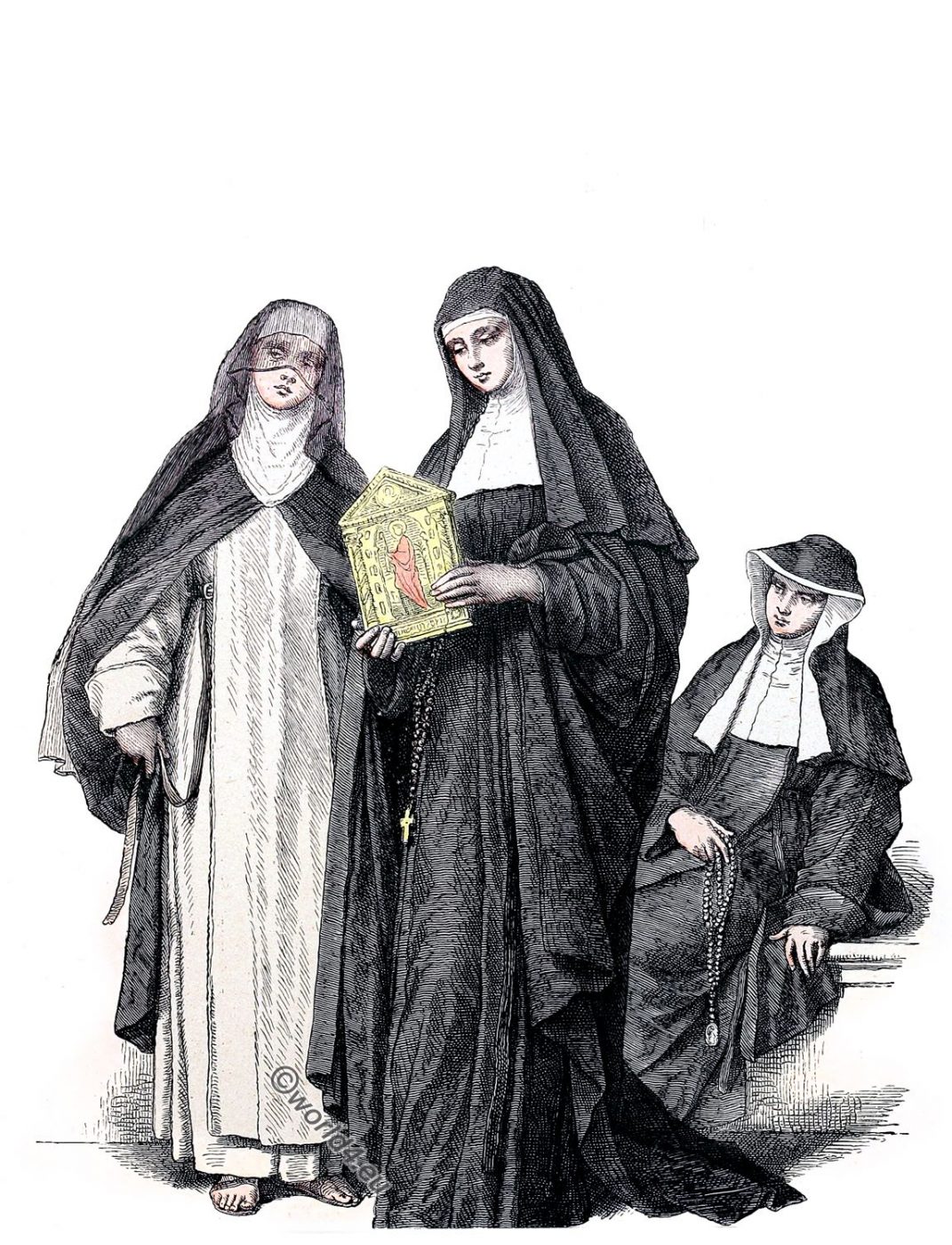
The Augustinian nuns (in Latin Moniales Ordinis Sancti Augustini) are the contemplative sisters belonging to the second order of Saint Augustine: like the friars of the male branch, the Augustinian nuns put the acronym O.S.A. on their name.
Augustinian nuns is a collective term for various orders or congregations for nuns or sisters who live according to the Rule of St Augustine written by Augustine of Hippo (died AD 430). Their members make simple or solemn vows.
Order of Dominicans
Nuns who live according to the Rule of St. Dominic.
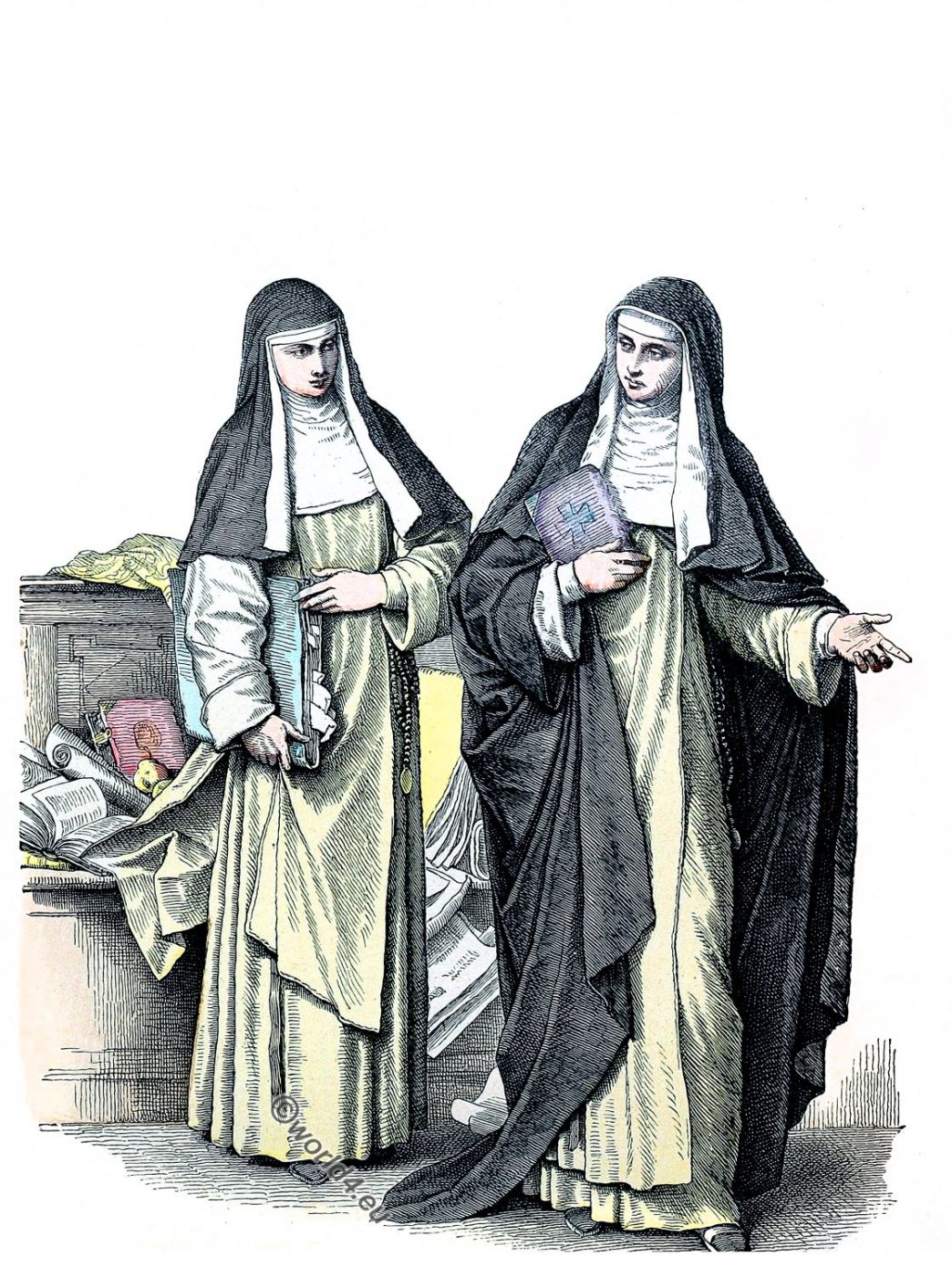
The Catholic Order of Dominicans, also known as the Order of Preachers, lat. Ordo (fratrum) Praedicatorum (Order abbreviation OP), was founded by St. Dominic in the early 13th century. The seat of the General Curia of the Order of Preachers is Santa Sabina in Rome.
From the beginning, the basis of the Order was the Rule of Augustine, which is why the Dominicans are counted among the Augustinian Orders. Since the beginning of the Inquisition at the beginning of the 13th century, the Dominican Order has been providing papal inquisitors to track down and persecute heretics. The Dominicans, who were therefore also called domini canes (dogs of the Lord) with a play on words, became particularly active in southern France in the inquisitory fight against the Cathars.
In addition to inquisitors from the ranks of other orders, such as the Franciscans, Dominicans acted as inquisitors throughout the Middle Ages, especially in France, Italy and the Holy Roman Empire. Dominicans also participated in the beginnings of witch-hunts, including Nicolas Jacquier († 1472) and Heinrich Kramer († 1505), the author of the witch-hammer.
Like other mendicant orders, the Dominicans developed a hostile attitude towards Jews in the late Middle Ages through their missionary zeal.
What distinguishes the Order of Friars Preachers from its foundation is its democratic constitution. All the Friars share the responsibility for the realization of the objectives of the Religious Community. There is a participation right at all levels. All superiors are elected on a temporary basis. Important decisions are taken by the community of Friars or their respective delegates in the Conventual, Provincial or General Chapters.
Benedictine nuns
Nuns who live according to the Rule of St. Benedict.
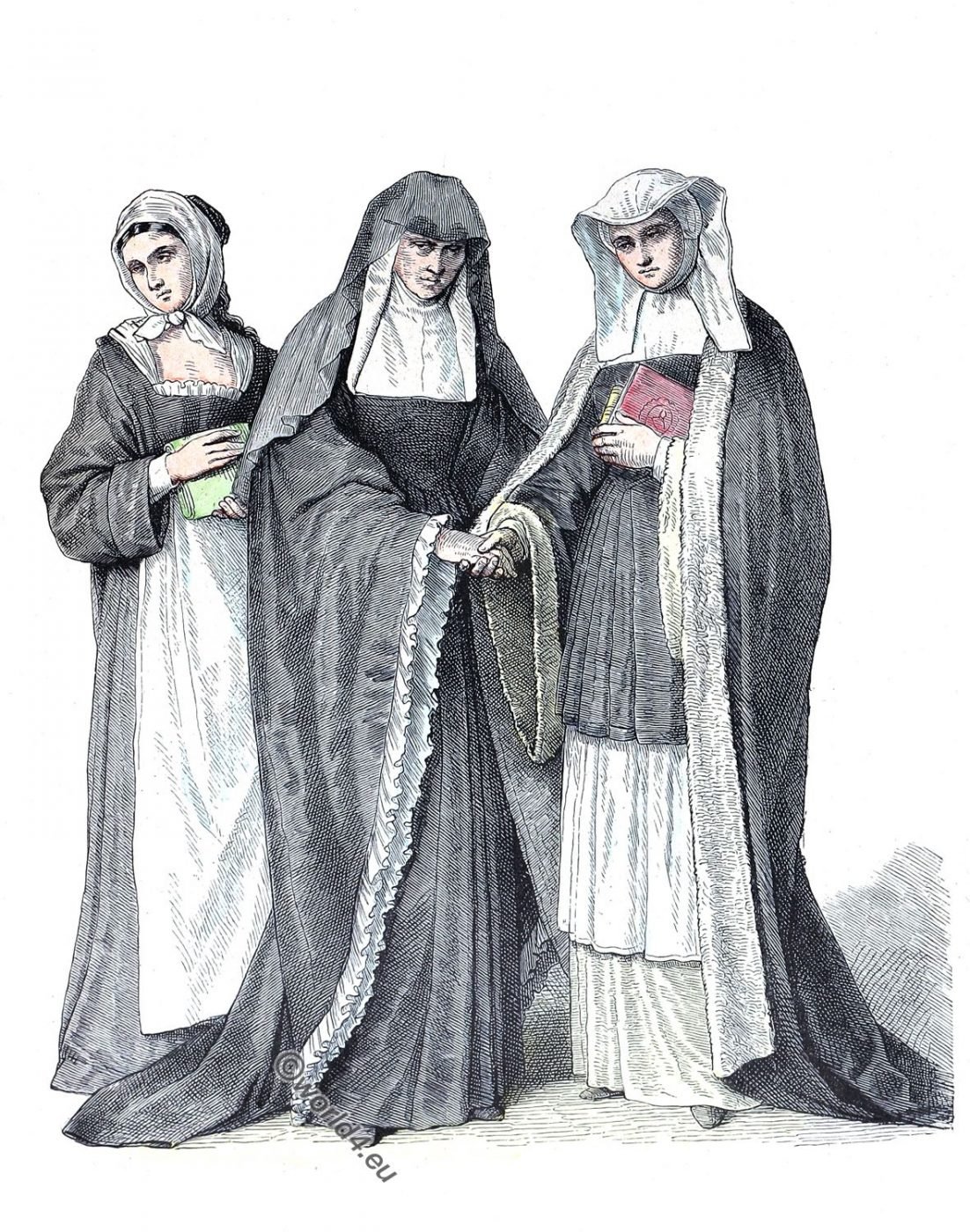
Benedictine Sisters, Order abbreviation OSB, Ordo Sancti Benedicti in Latin, are religious women who live according to the Rule of St. Benedict.
According to tradition, the Benedictine monasteries of women date back to St. Scholastica, the twin sister of St. Benedict of Nursia, and thus to the 6th century. Scholastica is mentioned in the Vita of St. Benedict as a consecrated virgin; whether she lived in a monastery whose community lived according to the Benedictine rule and is thus considered a Benedictine nun cannot be inferred from this.
In fact the origins of Benedictine female monasticism are rather unclear: it should be remembered that Benedict of Norcia did not create order in the canonical sense of the word, but established a rule for monastic communities. The Benedictine Rule does not mention nuns, and it is not known whether it was the founder’s intention to extend compliance to nuns.
Some references to the first history of Benedictine nuns can be deduced from the life of Saint Benedict, written by Gregory the Great: In his dialogues Gregory mentions consecrated women spiritually supported by the monks of Benedict (dialogues Lib. II, c. XIX), and his sister Scholastica (to whom the foundation of the Benedictines is traditionally attributed) says that she was consecrated to the Lord from childhood (dialogues Lib. II, c. XXXIII).
Probably for the first centuries the nuns added other rules to the Benedictine one, especially that of Cesario di Arles.
More precise information can be found in the eighth century, at the time of the evangelization of Germany: the nuns (Lioba, Valpurga) collaborated with the monks in the missions.
With Benedict of Aniane, who under Ludovic the Pious had the task of visiting and reforming the abbeys of the Empire and restoring religious discipline, the Benedictine rule was introduced in all female monasteries.
The Benedictines are cloistered religious and observe the Rule of St. Benedict. They are organized in autonomous monasteries: each house has its own characteristics and, in addition to the celebration of the divine office, is dedicated to specialized and particular activities (hospitality, education, agricultural work, restoration and preservation of ancient books, organization of spiritual retreats …). The monasteries, grouped in federations, are run by an elected abbess.
Most Benedictine nuns live as nuns in seclusion. Since the 20th century, however, there have also been some non-clause communities whose members carry out work outside the monastery, such as the Missionary Benedictine Sisters and the community of Venio.
There are also Benedictine or Benedictine-oriented women’s communities in the Anglican and Protestant churches (e.g. Community Casteller Ring).
Ursuline nuns
Nuns who live according to the Rule of Saint Angela Merici.
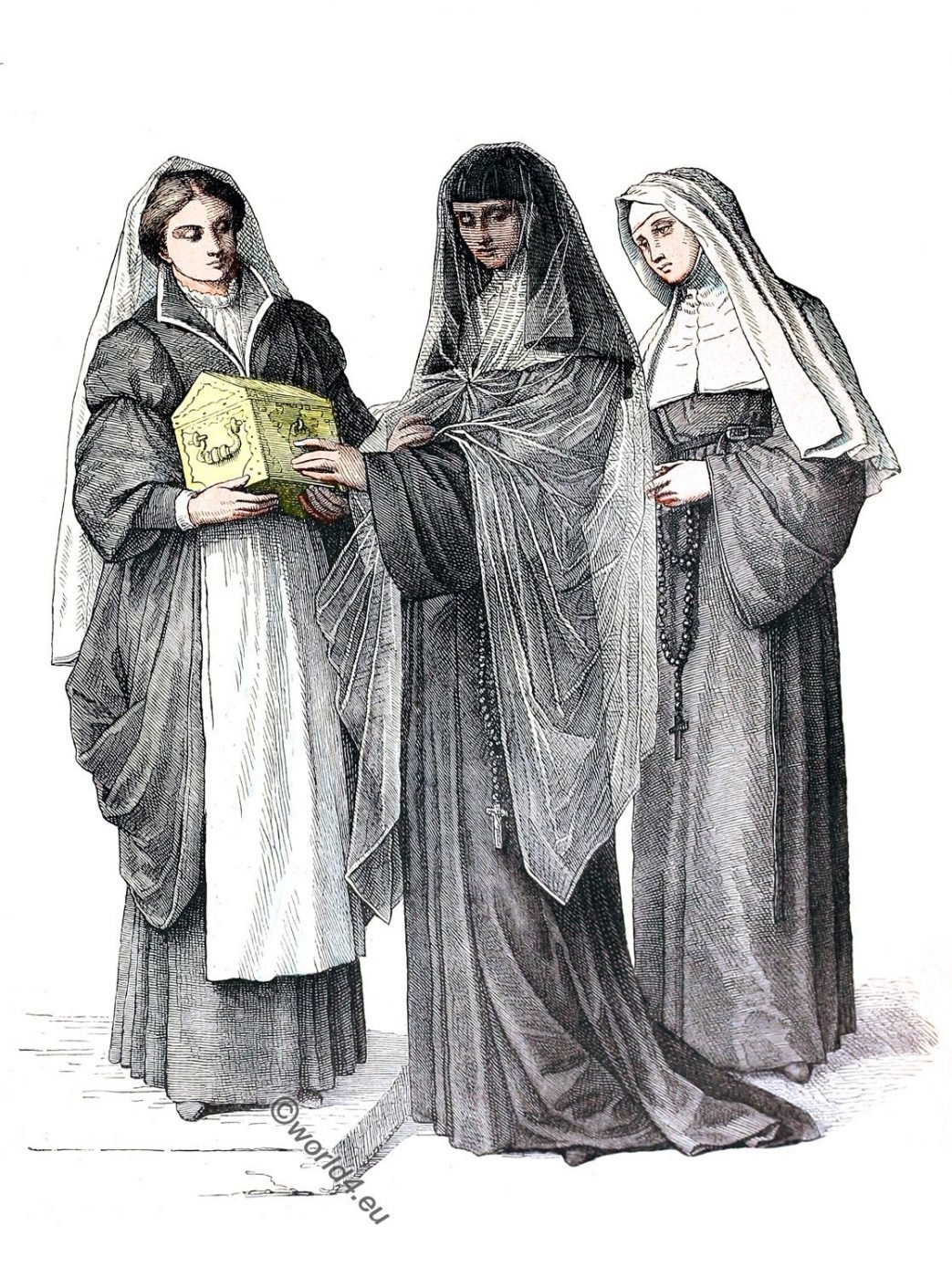
The Ursulines, actually the Society of St. Ursula in Latin Ordo Sanctae Ursulae, abbreviation OSU, formerly also called Ursuline Sisters, are a religious community founded by Angela Merici in Brescia in 1535, which works in the education of girls. The beginnings of the work of the Ursulines are regarded as the “beginning of the entire modern education of young girls”. The Ursulines are under the patronage of St. Ursula.
Via Avignon the Ursulines spread very quickly in France. Increasingly, they also gave lessons in the elementary subjects of reading, writing, arithmetic and manual work.
In the original form of the Compagnia di Sant’Orsola (“Society of Saint Ursula”), according to the evangelical counsels, women lived in poverty, celibacy and obedience, but without being bound by solemn profession and thus to the enclosure of a monastery.
They continued to live in their families, meeting regularly for worship, prayer and spiritual formation, and wearing ordinary clothes. The aim of the fellowship was to strengthen one another in religious life and to encourage others to live according to the Gospel through their way of life.
This was not associated with any particular task. The “Compagnia di Sant’Orsola” was in some ways the first secular institute. Angela Merici wrote a rule for this community.
After Angela’s death, the members of the community were increasingly entrusted with catechism classes, which were offered everywhere following the Council of Trent. Cardinal Karl Borromeo, Archbishop of Milan, entrusted them with the care of orphan girls, and the Ursulines recognized the need for a community life.
At the beginning of the 17th century the community changed into a cloistered order, both at the request of the sisters themselves and through external pressure. Although they were now subject to the strict regulations of the enclosure, the education of girls remained a task for the sisters.
Today there are Ursulines in almost all parts of the world. They live in monasteries as well as in apartments. In total, more than 10,000 sisters belong to the Order.

Related
Discover more from World4 Costume Culture History
Subscribe to get the latest posts sent to your email.

